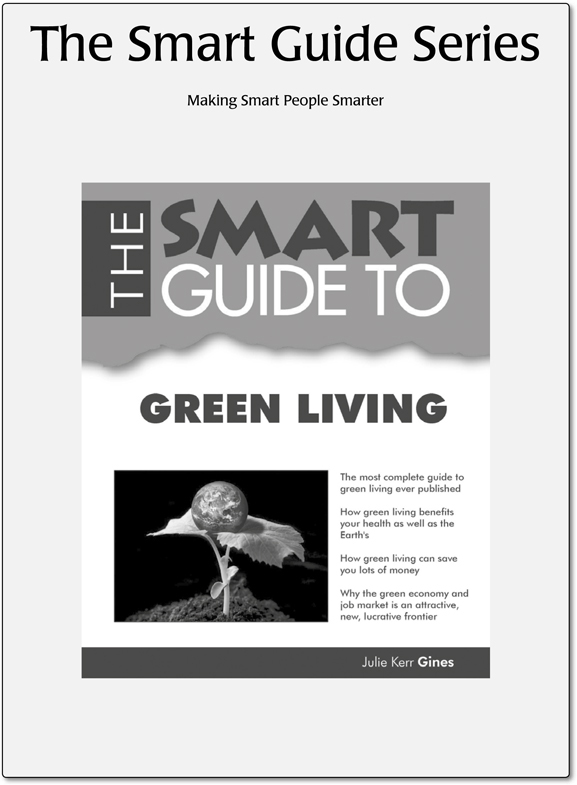
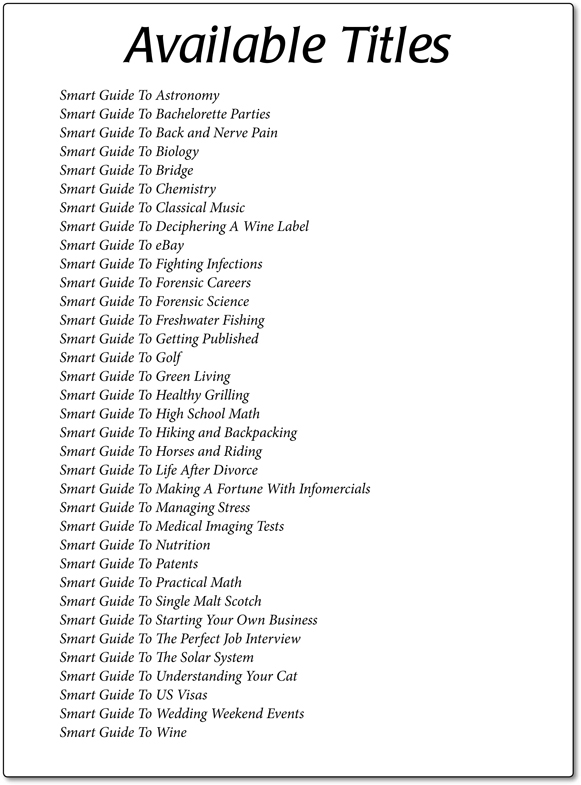


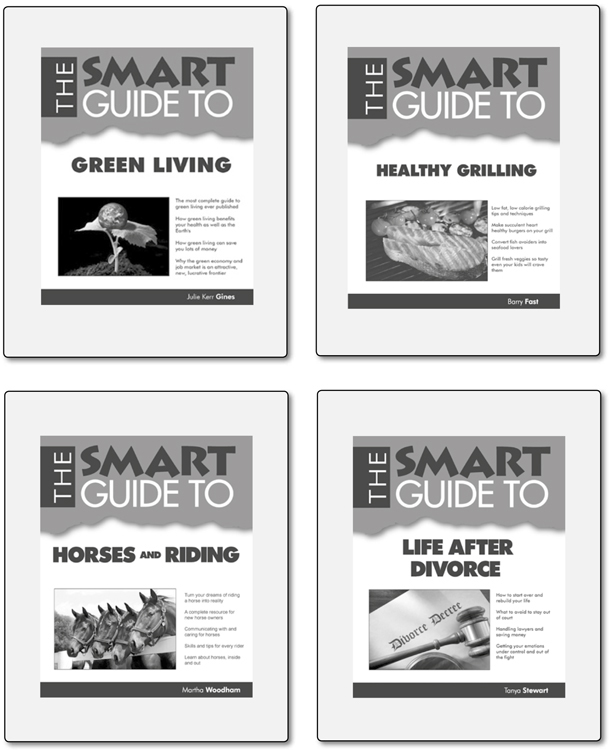
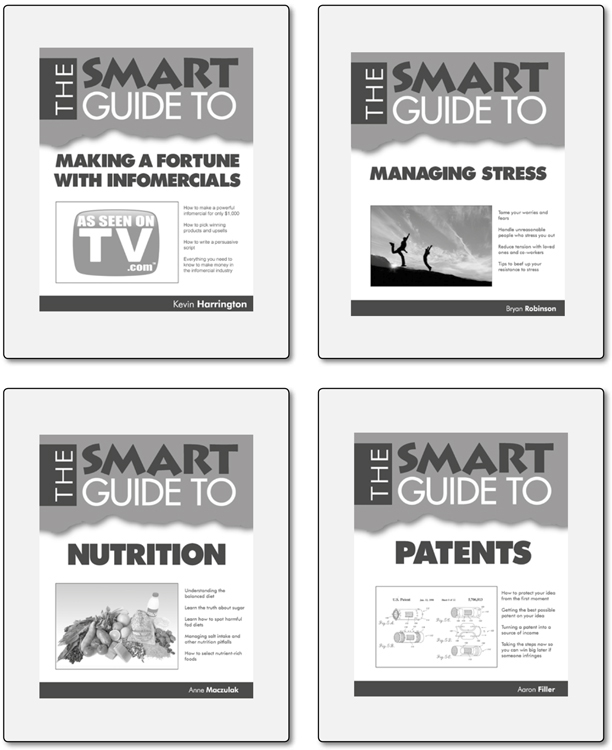


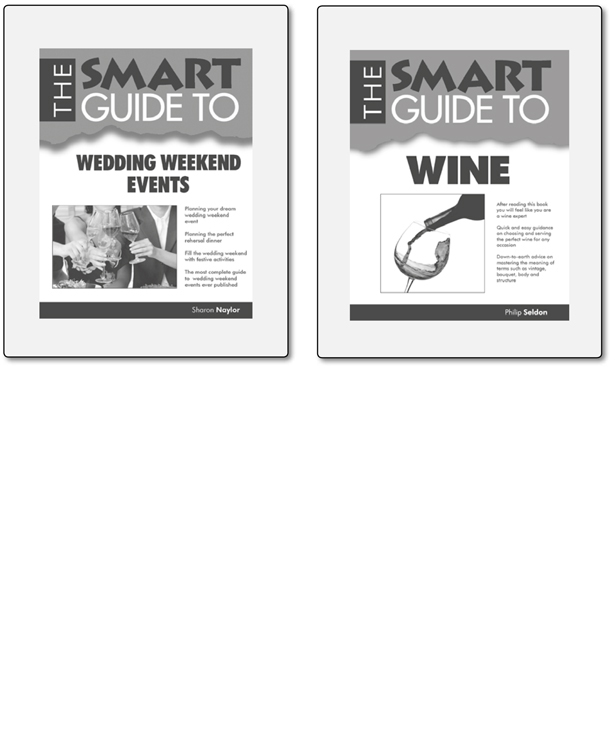

The Smart Guide To Practical Math
Published by
Smart Guide Publications, Inc.
2517 Deer Chase Drive
Norman, OK 73071
www.smartguidepublications.com
Copyright 2012 by Jim Stein. All rights reserved. No part of this book, including interior design, cover design, illustrations and icons may be reproduced or transmitted in any form or stored in a retrieval system, or transmitted by any means, electronic, mechanical, photocopying, recording, or otherwise, without written permission from the publisher. Although every precaution has been taken in the preparation of this book, the publisher and author assume no responsibility for errors or omissions. The author and publisher specifically disclaim any responsibility for any liability, loss, or risk, personal or otherwise, which is incurred as a consequence, directly or indirectly, of the use and application of any of the contents of this book.
For information, address: Smart Guide Publications, Inc. 2517 Deer Creek Drive, Norman, OK 73071
SMART GUIDE and Design are registered trademarks licensed to Smart Guide Publications, Inc.
International Standard Book Number: 978-0-9834421-3-4
Library of Congress Catalog Card Number:
11 12 13 14 15 10 9 8 7 6 5 4 3 2 1
Printed in the United States of America
Cover design: Lorna Llewellyn
Copy Editor: Ruth Strother
Back cover design: Joel Friedlander, Eric Gelb, Deon Seifert
Back cover copy: Eric Gelb, Deon Seifert
Illustrations: James Balkovek
Production: Zo Lonergan
Indexer: Cory Emberson
V.P./Business Manager: Cathy Barker
ACKNOWLEDGMENTS
There are several people who made substantial contributions to this book. First is my agent, Jodie Rhodes, who brought Smart Guide Publications to my attention and talked me into writing one when I was dubious. Had she not done so, there would be no Smart Guide to Practical Math or at least no book with that title and with yours truly as the author. Second is retired Prof. Les Axelrod of Illinois Institute of Technology. Les responded to all my questions about electricity, an area in which I am remarkably deficientand if there are mistakes in the electricity chapter, they are mine, not his. Third is Sherry Skipper-Spurgeon, who made numerous down-to-earth suggestions that helped bring the Practical into Practical Math , especially with regard to everyday problems. Last, but by no means least, is my wife, Linda, who put up with an inordinate amount of obsessive-compulsive behavior on my part while I was writing this bookand helped me by dragging me away from the computer when necessary. She helped me realize that all work and no play makes yours trulyor anyone elsea very dull boy indeed
INTRODUCTION
This is a very different math book. Its purpose is to enable you to answer the questions that have quantitative answers, such as, How many pounds of hamburger should I use to make a meat loaf that serves six? or At what age should I take Social Security?
The title of this book is The Smart Guide to Practical Math. One definition of the word practical is useful and sensible. Of course, thats relativewhat is useful for a plumber may not be so useful for a housewife. As a result, although you will find some material in the book useful and sensible, there will be some material that you would never want or never need. Although you would never use that material, there are other people who almost certainly will.
Most math books aim to teach you math. Although this is highly praiseworthy, especially if you are a student who is considering a career that uses math extensively, such books are really not very useful for the vast majority of people. Most people do not wish to do the analysis necessary to find out how many pounds of hamburger to use to make meat loaf, or to discover at what age they should take Social Security. They want to be able to plug a few relevant numbers into a calculator (or a spreadsheet) and get the answer. Thats what this book will enable you to do.
Practical math is the math you need to answer the quantitative questions that are important to you. The answers to those questions are in this book.
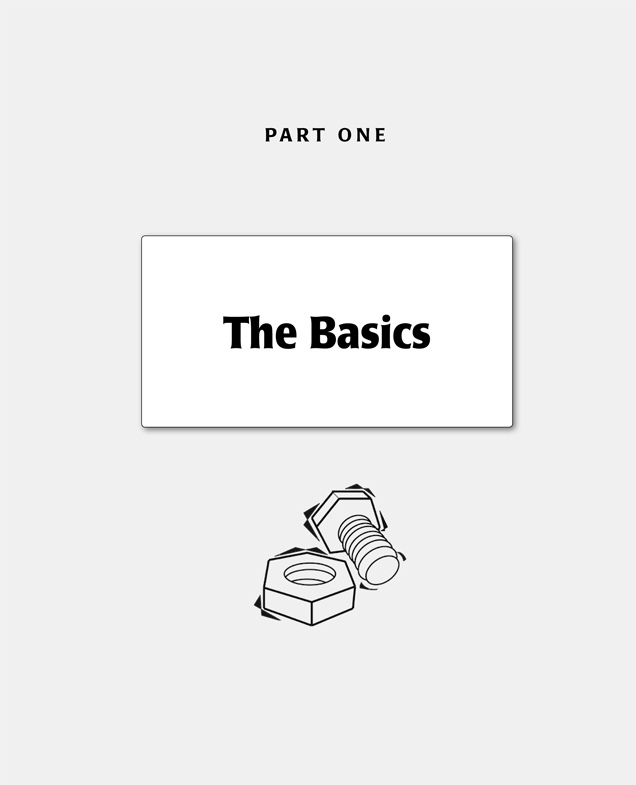
CHAPTER 1
 What Is Practical Math?
What Is Practical Math?
In This Chapter
- How this book will help you
- What practical math used to be and what it is now
- Standard calculators and percentages
Back in the 1950s, Chuck Berry recorded School Days, a song about the life of a typical high school student. It included the lines, American history, practical math, you studyin hard and hopin to pass. Practical math back then was a bedrock course in American high schools. You can still find courses in practical math today, but mostly in vocational or trade schools.
What happened to practical math? The one-word answer is Sputnik . The threat from advanced technology developed by the Soviet Union created a fear of a missile gap, and the powers that be decided that a concerted effort should be made to push engineering, the sciences, and mathematics. Engineering and the sciences use advanced mathematics, and algebra is the language of advanced mathematics. In an attempt to respond to the technological challenge of Sputnik, practical mathematics got phased out, and algebra got phased in.
Who Needs to Do the Math?
Math teachers would love for you to be able to do the mathto be able to solve the problem by using math to derive the formula that produces the answer. For most of us, though, its really not necessary. Math answers a broad variety of questionsbut most of those questions have been asked over and over again, and the answers have already been determined. Doing the math is necessary for engineers and scientists to solve those questions for which the answers havent been determined, but for almost everyone who is neither a scientist nor an engineer, doing the math isnt necessary.
Using the Math Is Whats Important
The answers to the majority of the questions that require math are already known. So doing the mathsolving the problem the way the math teachers wantis reinventing the wheel, big time.
What is also important is to make math practical. That motivates much of what will be presented in this book. For instance, it is clear that anything involving money directly is practicalall financial formulas are therefore practical. But what about such staples as determining the area of a rectangle? Thats a pure geometry question, and generally nobody cares about the answer to a geometry problem. However, suppose we were to look at a rectangular field and ask the following questions:
Next page
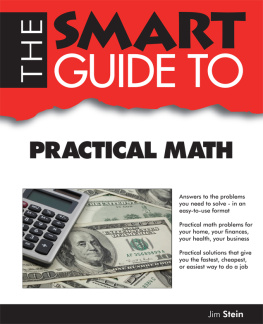

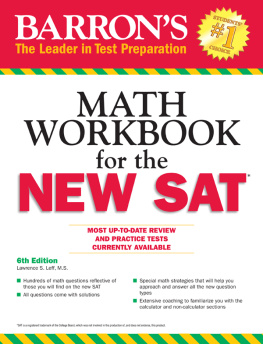
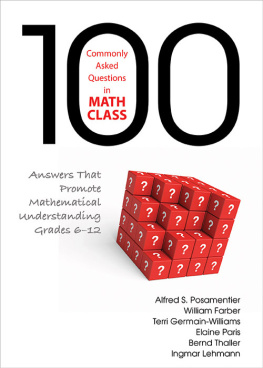
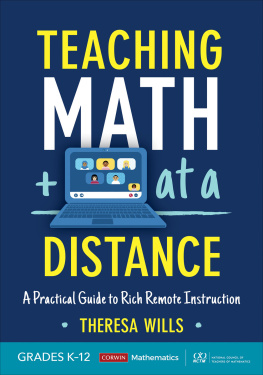











 What Is Practical Math?
What Is Practical Math?